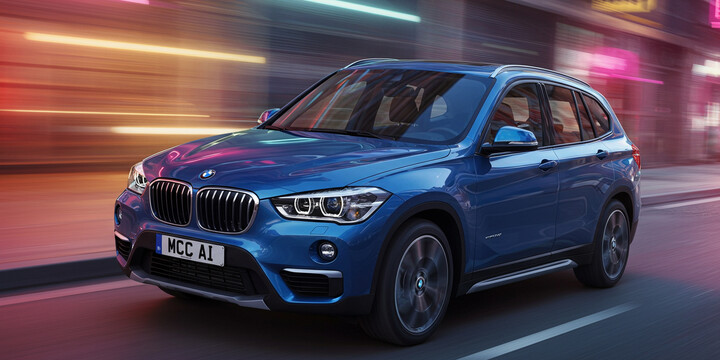
BMW X1 (2015-19) XDRIVE20D 5DR SUV 2.0 DPF SS 190 EU6 SE AUTO8
The BMW X1 (2015-19) XDRIVE20D 5DR SUV 2.0 DPF SS 190 EU6 SE AUTO8 is a compact yet versatile SUV that fits well within the popular crossover segment in the UK market. Known for its stylish design, practicality, and solid driving experience, this model appeals to families, urban commuters, and drivers seeking a premium feel in a manageable size. The XDRIVE20D designation indicates it offers all-wheel drive, making it suitable for a variety of weather conditions, while its 2.0-litre diesel engine combines reasonable fuel economy with good performance, making it an excellent choice for those covering a mix of city and motorway miles.
What makes the BMW X1 (2015-19) stand out are its high-quality interior, advanced features, and reputation for reliability. It balances sporty handling with comfort, and its sleek design helps it compare favorably against rivals in its class. With an average mileage of around 40,707 miles and a typical ownership history of just under two previous owners, this vehicle has been a well-maintained option for many UK drivers. If you're looking for a used SUV that combines German engineering, practicality, and a sense of luxury, the BMW X1 (2015-19) XDRIVE20D 5DR SUV is definitely worth considering.

average use

The most recent mileage data for the BMW X1 (2015-19) XDRIVE20D 5DR SUV indicates that the vehicle readings are most commonly clustered between 20,000 and 30,000 miles, accounting for 40% of the recorded data. Additionally, substantial proportions fall within the 40,000 to 50,000 miles (20%) and 70,000 to 80,000 miles (20%) ranges, with a smaller share in the 30,000 to 40,000 miles bracket (20%). This distribution suggests that a significant number of these vehicles tend to be relatively low to mid-mileage, though there's also a notable segment with higher mileage, potentially indicative of used vehicles with varied usage histories.

vehicle values

The private sale valuation data for the BMW X1 (2015-19) XDRIVE20D 5DR SUV indicates a relatively even distribution across five price ranges. Specifically, 20% of the vehicles are valued between £10,000 and £11,000, another 20% between £13,000 and £14,000, and similarly, 20% each in the £17,000-£18,000, £18,000-£19,000, and £19,000-£20,000 ranges. This suggests a fairly balanced market pricing, with no particular price bracket dominating the private sale valuations. The data also hints at a consistent valuation pattern, with multiple price tiers within the £10,000 to £20,000 range, likely reflecting variations in vehicle condition, mileage, or features.

production years

The data indicates that the majority of the BMW X1 (2015-19) XDRIVE20D models, specifically 80%, were manufactured in 2017, with the remaining 20% produced in 2018. This suggests that 2017 was the predominant model year within this range, possibly reflecting higher availability or popularity of that specific manufacturing year during the period analyzed.

colour popularity

The data indicates that the most common main paint colour for the BMW X1 (2015-19) XDRIVE20D 5DR SUV 2.0 DPF SS 190 EU6 SE AUTO8 is white, accounting for 60% of the vehicles in the sample. Blue and grey are equally popular, each representing 20%. This suggests a strong preference among buyers for white, possibly due to its popularity and resale appeal, while blue and grey are also common choices.

ownership cycle

The data indicates that, among the sampled BMW X1 (2015-19) XDRIVE20D 5DR SUV 2.0 DPF SS 190 EU6 SE AUTO8 vehicles, the majority have had two registered keepers, accounting for 60%. The remaining 40% have had three registered keepers. This suggests that most of these vehicles tend to be owned by two different individuals over their lifetimes, which could be indicative of typical ownership cycles or usage patterns within this vehicle model.

engine choices

The data indicates that all BMW X1 (2015-19) XDRIVE20D models in the sample are equipped with a 2.0-liter diesel engine, reflecting a consistent engine capacity across the entire dataset. Additionally, the vehicles exclusively use diesel as their primary fuel type. This uniformity suggests that the model's engine specifications and fuel choice have remained stable in this period, likely aiming at efficiency and performance tailored to diesel preferences in the UK market.












